履歴書は日本で就職活動を行う際に欠かせない書類です。履歴書には主に自分の基本情報、資格、志望理由、自己PRなどを記載します。
他国のレジュメと違い日本の履歴書はフォーマットが決まっており、ほとんどの企業で履歴書を求められた際はそのフォーマットに沿って情報を記入します。
面接で採用担当者と直接会う前に履歴書を送ることもあるので履歴書でおおよそどのような人かの印象がつきます。悪い印象を与えないようこの記事を通し注意すべき点などについて学びましょう!
Scroll down for English translation.
目次
1. 準備
2. 部分別解説
①基本情報
②学歴・職歴
③免許・資格
④志望動機・自己PR
⑤本人記入希望欄
準備
履歴書の用紙は大学の購買、文房具店、コンビニエンスストアなど様々なお店で購入可能です。新卒用、転職者用、アルバイト用など種類があるので自分が必要な種類を確認したうえで合った履歴書を購入しましょう。
履歴書の記入は基本的に黒ボールペンで行います。間違いをしてしまった場合は修正テープや字消し線などで直すのではなく、新し用紙に記入し直します。間違いを避けるために初めにシャープペンシルで下書きをしたり違う用紙に練習書きをしたりしましょう。
複数の企業に提出する際コピーを提出するのではなく、一企業に対して履歴書を一枚書きましょう。同じものを使い回すのではなく企業ごとに合った志望動機や自己PRを考えましょう。
最近では履歴書を手書きするのではなくパソコンなどを利用して電子ファイルで作成することが増えてきました。書き始める前に応募する企業で手書きと電子版どちらが求められているかを確認しましょう。
部分別解説
ここでは履歴書を5パートに分け、パート別に解説していきます。
①基本情報 ②学歴・職歴 ③免許・資格 ④志望動機・自己PR ⑤本人記入希望欄
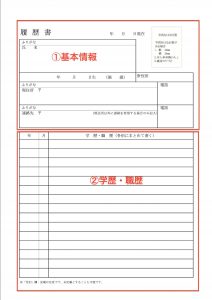
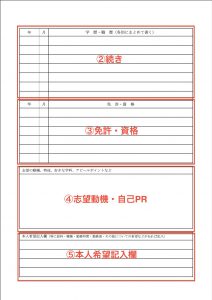
①基本情報
日付:企業に提出する当日の日付を記入しましょう。
写真:履歴書の写真はスーツを着用し、身だしなみを整えて撮影しましょう。携帯電話などで撮影するのではなく証明写真機を利用することで綺麗な写りの写真を撮れるでしょう。
例:

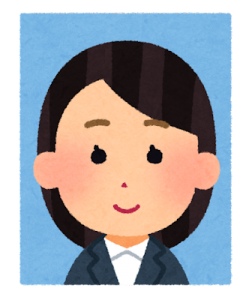
氏名:フルネームで記入。ふりがなは漢字の部分のみに書きます。表記が「ふりがな」の場合はひらがなで、「フリガナ」の場合はカタカナでふりがなを書きます。
生年月日:年は和暦の表記がない際は西暦で記入します。
住所・電話番号:マンション名や部屋番号を省略せず全て記入します。
連絡先・電話番号:現住所と希望する連絡先が違う場合のみ記入します。同じ場合は空欄で大丈夫です。
②学歴・職歴
学歴、職歴の順番で記入します。
学歴:
学歴を記入する際「学歴」と最初の行に記入してから実際の学歴を記入します。
入学年と卒業年を分けて二行使用して書きます。
例: 2015年4月 〇〇高校 入学
2019年3月 〇〇高校 卒業
大学・短大・専門学校については学部・学科・専攻も記入します。現在在学中の場合は、最終行に卒業予定年月を記入した上で、「○○大学○○学部○○学科卒業見込み」などのように記入します。
職歴:
学歴を記入後一行開けて「職歴」と記入し、次の行から職歴を書きます。
新卒などで職歴がない場合は空欄のままにしておきます。
アピールになるアルバイトやインターン経験がある際は記入ても良いでしょう。
学歴・職歴が左側で収まらない場合は右側に続けて記入します。
③免許・資格
持っている免許・資格の正式名称を取得年月順に記入します。数が多く入りきらない場合は仕事に関係のあるものを抜粋して記載します。
④志望動機・自己PR
この部分では応募企業をなぜ志望するのか、自分のアピールポイントなどを簡潔に記入します。アピールポイントは企業で活かせるような特技や強みについて話すといい印象を与えるでしょう。
「その企業の何に魅力を感じて応募したのか」「自分は、その企業に対してどのように貢献できるのか」「どんな知識や経験を生かして、どんな仕事をしたいのか」を自分の言葉で、できるだけ具体的に書きます。履歴書の中でも最も重要な項目です。
⑤本人希望記入欄
自分のやりたい仕事が明確な場合は、その意志を伝えるために希望職種を記入すると良いでしょう。給料・福利厚生・勤務地などの諸条件については、どうしても譲れない場合以外は記入を控えます。特に記入する項目がない場合は空欄にせず「御社規定に準じます」と書きます。
最後に
履歴書の内容が素晴らしくても、字が読みずらいと読んでいる企業側も採用する気持ちが下がってしまいます。このような悪い印象を避けるために綺麗に、簡潔に記入しましょう。また、志望理由・自己PR欄は自分のどのような部分をアピールすれば企業側に響くか、採用してもらえる人材を想像してもらえるかなどをしっかり考えてから書きましょう。
____________________________________________________
A resume is an indispensable document when looking for a job in Japan. A resume mainly contains basic information about yourself, your qualifications, reasons for applying, and your personal appeal to the company.
Unlike resumes in other countries, Japanese resumes have a somewhat fixed format, and most companies will ask you to fill out your resume according to that format.
Since you may send your resume to the hiring manager before you meet them in person for an interview, your resume will give them an impression of what kind of person you are. This article will help you learn about points to be careful of so that you don’t make a bad impression!
Table of Contents
1. Preparation
2. Explanation according to section
①Basic information
②Academic history, career
③Licence, certification
④Reason for applying, self-appeal
⑤Requests
Preparation
Resume paper can be purchased at various stores such as the university shop, stationery stores, and convenience stores. There are different types, such as those for new graduates, job changers, and part-time workers, so make sure you know what type you need and buy the right one.
Use a black ballpoint pen to fill out your resume. If you make a mistake, don’t use correction tape or cross the words out, but rewrite it on a new sheet of paper. To avoid mistakes, use a mechanical pencil or practice writing on a different sheet of paper before writing the final draft.
When submitting to multiple companies, write one resume for each company, rather than submitting copies. Think about why you want to apply and how you can present yourself to each company, rather than just writing the same things.
These days, more and more resumes are being created electronically using computers instead of being handwritten. Before you start writing, make sure you know whether the company you are applying to requires a handwritten or electronic version.
Explanation According to Section
In this section, we will divide the resume into five parts and explain each part.
①Basic Information ②Academic history, career ③Licence, certification ④Reason for applying, self appeal ⑤Requests

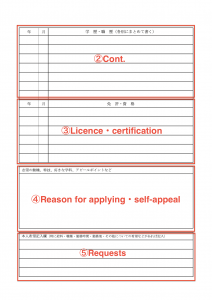
①Basic Information
Date: Write the date of the day you will submit your resume to the company.
Photo: Wear a suit and be presentable for your resume photo. It is best to use a photo machine instead of a cell phone to get a good picture.
Example:

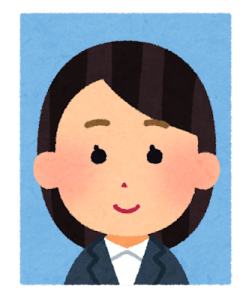
Name: Write your full name. Write furigana only on the kanji part. If “ふりがな” is the label, write it in hiragana; if “フリガナ” is the label, write it in katakana.
Date of birth: If the year is not written in the Japanese style (Showa, Heisei etc.), it should be written in the Western year (ex: 1980).
Address and telephone number: Write the whole address including the name of the apartment and room number.
Contact information and phone number: Fill in only if your current address is different from your preferred contact information. If they are the same, you can leave them blank.
②Academic history, career
Enter your academic and career history in this order.
Academic history:
When writing your education, put “学歴” (education) on the first line and then write your academic history.
Use two lines, one for the year you entered school and the other for the year you graduated.
e.g. April 2015 〇〇 High School Enrollment
March 2019: 〇〇 High School Graduation
*In Japanese
If you are currently enrolled in a university, junior college, or vocational school, enter the department and major. If you are currently enrolled in a college or university, enter the expected graduation date on the last line, and then write “○○大学○○学部○○学科卒業見込み” (Expected to graduate from University of XX, Faculty of XX, Department of XX).
Career history:
After entering your educational background, open one line and enter “職歴” (career history) and start writing your career history on the next line.
If you are a new graduate and have no work experience, leave it blank.
If you have a part-time job or an internship that appeals to you, you may write it.
If your education and work history do not fit on the left side, continue to the right side.
③Licence, certification
Enter the official names of the licenses and qualifications you hold, in the order of when they were obtained. If there are too many to list, select the ones that are relevant to the job.
④Reason for applying, self appeal
This is the most important section of your resume. In this section, you should briefly explain why you are applying to the company and what you have to offer to the company. It will make a good impression if you talk about your skills and strengths that can be utilized in the job.
In your own words, be as specific as possible: What attracted you to apply for this company? How can you contribute to the company? How can you utilize your knowledge and experience in the job?
⑤Requests
If you have a clear idea of the kind of work you want to do, it is a good idea to mention it here to convey your intention. Refrain from mentioning the pay, welfare, work location, if it is not a necessity. If you have nothing in particular, you can write “御社規定に準じます” (according to your company’s regulations).
End
Even if the content of your resume is remarkable, if the handwriting is illegible or messy, the people reading it will be less inclined to hire you. To avoid a bad impression, fill in your resume neatly and concisely. Also, in the “Reasons for application, self-appeal” section, think carefully about what parts of yourself will appeal to the company, and what will make them imagine you as a person fit for the position.
Enjin株式会社とは
Enjin株式会社では、日本にいる外国人留学生や海外にいる日本語学習者(Japalings)と優秀な外国人人材を獲得したいという企業のマッチングをしています。
◆外国人留学生への支援
・インターンシップ紹介
・アルバイト紹介
・就職紹介(新卒採用・中途採用)
◆海外大学に通う外国人大学生への支援
・特定活動インターンシップ、サマージョブ
◆海外の日本語学習者への支援
・日本への留学
・特定技能取得
母国語、日本語、英語などの多言習得はもちろんのこと、将来有望な若者が数多く登録しています。

